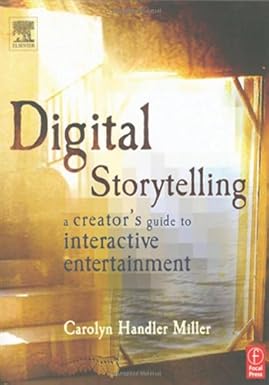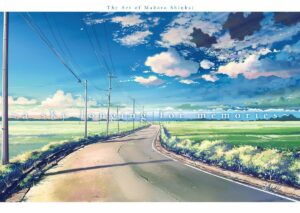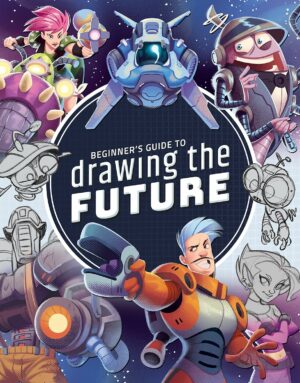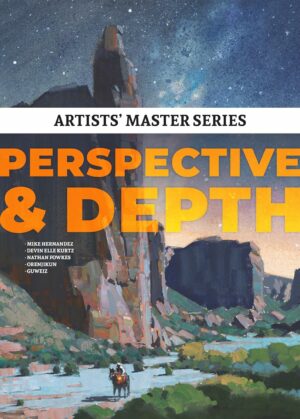Digital Storytelling explains key strategies for conveying narrative through digital technologies, based on personal experience and numerous case studies, providing project managers, interactive content designers, and writers with the tools necessary for planning a successful interactive project, including ideas for product development and conceptualization.
Detailed planning processes for all types of interactive projects are discussed, including videogames, massively multiplayer online games, the Internet, interactive TV, cross-media productions, smart toys, virtual reality, immersive environments, wireless devices, kiosks, and DVDs. The book also covers topics such as: structure, characters and emotions; tackling projects for children; finding work and staying employed; and more.
Miller has written Digital Storytelling for the professional and the student, and details what interactive content developers and project managers need to know in a clear, enthusiastic manner.
Read more









Kron –
A thoughtful, comprehensive and up-to-date treatment of interactive media. The screen captures, urls, and illustrative case studies that populate the pages of this cleverly-written book help the reader to develop a deep and practical understanding of the subject matter. Proof of the pudding: I’m using it myself, as a resource on a cutting-edge, interactive project that I’m spearheading. I highly recommend it.
Riki Mann –
Digital Storytelling by Carolyn Handler Miller is the best book in the vast field of interactive writing. After reading it I was thrilled at how informative and easy-to-understand it was for me. Miller’s writing is clear and concise and will help not only the novice but the experieced professional as well. I strongly recommend Digital Storytelling for all writers who want to learn about every phase of interactive writing, plus writing in general. In fact, I consider Digial Storytelling to be the Bible in its field and a wonderful reference book to have next to your computer.
RDG –
Whether your new to writing or producing interactive programs or a seasoned pro, into fiction or non-fiction, this book is the best there is in explaining this new craft.
Lynn C. Sweeney –
DIGITAL STORYTELLING is a seminal text for the study of interactive narrative. It is the first book to thoroughly examine this new art form. In my experience as a college instructor in media arts I have found few works that discuss the universe of interactive media in a such a comprehensive fashion. Miller covers the cutting edge of wireless media, virtual reality, interactive television, mltiplayer online games and interactive cinema, in addition to electronic kiosks and DVDs. She even offers a chapter on the fascinating world of “smart toys”. I believe her case studies to be particularly useful to students.
The book also includes an invaluable section on such “big pictures” subjects as character development, dialog, point of view, and structure, examing how these essential elements of narrative are impacted by interactivity. Also included is a meaty chapter on the development process, which details the various types of documents that are generated during the creation of a work on interactive narrative.
To put the subject of digital storytelling in perspective, Miller introduces the book with a provocative chapter on the various types of interactive narrative that existed long before computers were ever invented, and suggests what these old forms of storytelling can still teach us today. The book concludes with a practical discussion on career issues, and offers a full glossary of new media terms. Highly readable, I believe Miller’s DIGITAL STORYTELLING would be useful even to those already working in the field, as well as students or anyone interested in the future of interactive storytelling.
Shawna –
Not a very playful book. In fact… it seems to follow the old playbook of how things are done. The same playbook that men/boys have written when it comes to gaming. Shoot first and … questions? what questions? story? What’s that? I already knew the material that was in this book. Didn’t offer anything new for me. With this book… just a play an online game or grab a game off your shelf, read about the history of “interactive” media and computers and .. voila… you’ve read the book. For what I needed… this book just did not cover it. Time to lay some new ground in the gaming arena.
Pamela Jaye Smith –
DIGITAL STORYTELLING
Carolyn Handler Miller
From sitting in front of the camp fire to sitting in front of a computer, story-telling has always been rewarding, yet often frustrating. The challenges of telling a story using different media, particularly a new one, can be intimidating, especially to someone who wasn’t born with a mouse in their mouth.
Not to worry, though, for in the first chapter of Carolyn Miller’s book, she lays those concerns to rest by noting that interactive stories are similar to myths, rituals, and games. I immediately felt better and dove right into this comprehensive book.
DIGITAL STORYTELLING is valuable on a number of levels.
It’s a scholarly revue and investigation of interactive media and thus an excellent resource for researchers.
It explains the terminology and theories.
It offers specific tools for digital storytelling development of plot, structure, and characters.
It has guidelines for specific uses of digital storytelling such as information, education, and advertising.
Children’s projects have their own helpful chapter.
As a story consultant moving more into games design work, and as a writer desiring to keep up with the latest techniques and technologies, I know I’ll be reaching for DIGITAL STORYTELLING a lot. And I know I’ll always find it a rich resource of information and inspiration.
Frank De Palma –
This book brings clarity to a complex and often confusing subject. After co-writing several CD-ROM games, I thought I knew what I needed to know about interactive entertainment. This book made me realize how much more there is to this world and the vast potential that’s there for creating new forms of entertainment and education. Instead of making you feel overwhelmed by the possibilities, Ms. Miller lays it all out for you in ways that are not only informative but actually inspirational. The chapters are well organized and the real-world examples are plentiful. On the one hand, it’s an indespensible reference for anyone who writes (or wants to write) interactive material. On the other, it works as a muse, helping you to see things in a new light and often sparking ideas. It’s a must for those who want to work in this field.